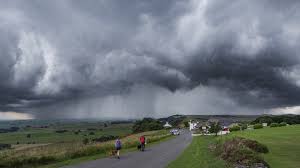Our unpredictable weather
With the UK’s weather continuing to shift from being intensely cold to predicted April/May heatwaves (with talk of snow flurries in between) we thought that now would be a good time to post some tips that could help you to protect your home... whatever the weather.
Preparing for cold weather
Proper insulation is key to keeping your home warm and energy-efficient during the cold weather. Whilst the autumn-winter season is ordinarily the perfect time of the year to take care of these fixes, it’s never too late – or too early – to put things in place. You will first need to ensure that your walls, attic, and floors are well-insulated to prevent heat loss and reduce energy bills.
Sealing any drafts or gaps around windows, doors and electrical outlets is necessary in order to prevent cold air from entering your home. You can use weatherstripping, caulking or foam insulation to seal gaps and improve energy efficiency.
The insulation of exposed pipes in unheated areas such as basements and attics will also be needed, in order to prevent them from freezing and bursting during cold snaps. Maybe consider installing pipe insulation sleeves for added protection.
Also, why not schedule regular year-round maintenance for your heating system? You could clean or replace filters, check for leaks or blockages, and consider upgrading to a programmable thermostat for better control over heating.
Preparing for floods
If you live in an area that has been flooded in the past or you are worried about new flooding, you can ask an electrician to raise the electrical outlets, switches and wiring to above potential flood levels. This will minimise the risk of electrical damage during flooding. (Gain several quotes before you start the process of hiring a professional.)
If your home is at risk of flooding, you might consider installing flood barriers or gates to prevent water from entering your property. These barriers can be temporary or permanent and provide an effective way to protect your home during flood events. Keeping sandbags in a shed or outhouse is a wise move, too.
Ensure that your property has adequate drainage systems in place to redirect water away from your home during heavy rain. Clear gutters and downspouts regularly, and consider installing French drains or swales to manage excess water runoff.
Don’t forget about the trusty water butt: recovery and storage of large quantities of rainwater is a cost-effective and practical way to keep your plants watered during the drier months. Once the rainwater is collected in water butts, it can be used to water borders or cleanse household or outdoor equipment. Water butts are highly cost-effective and available in various sizes and shapes, from small to large.
Whether you are building a new home or renovating an older property, choose flood-resistant materials such as concrete, brick or composite decking for areas prone to flooding. These materials are less susceptible to water damage and can help to minimise repair costs.
Preparing for heatwaves
Install sunshades or awnings over windows and doors to provide shade and reduce solar heat gain during heatwaves. This can help to keep your home cooler and reduce the need for air conditioning.
You could even switch your home’s current roof tiles to roofing materials with high solar reflectance, such as light-coloured shingles or reflective coatings, to reduce heat absorption and lower indoor temperatures. This can help to improve comfort and energy efficiency during hot weather.
The garden comes into its own during the warmer spells. This spring/summer season, why not plant shade-giving trees strategically around your home to provide natural cooling and shade during upcoming hotter weather? Deciduous trees that lose their leaves in winter allow sunlight to enter your home during cooler months, while providing shade in summer.
You might like to use natural ventilation techniques to cool your home during the hot weather. Open windows and doors in the evening to allow cool air to circulate, and use fans to promote airflow throughout your home.
Protecting against storms and high winds
Before a storm front is due, secure or bring indoors any outdoor furniture, decorations, or equipment that could become airborne and cause damage during high winds.
Make a habit of regularly trimming trees and branches near your home to reduce the risk of them falling onto your property during storms. This helps prevent damage to your home's exterior and reduces the risk of injury.
Also, regularly inspect your roof and siding for loose or damaged materials that could be torn off by high winds; repair or replace any damaged areas to prevent water infiltration and further structural damage. You could also install storm shutters or reinforce doors and windows with impact-resistant materials to protect against wind-driven debris and reduce the risk of breakage during storms.

Weatherproofing your home is an ongoing process that requires careful planning and preparation for the wide variety of the UK’s weather conditions.
By implementing the weatherproofing tips outlined in this Blog Post, you can help to protect your home from extreme temperatures, heavy rainfall, flooding and other weather-related hazards.
Whether you're insulating your home against the cold, installing flood barriers to prevent water damage, or securing outdoor furniture before a storm - taking proactive measures to weatherproof your home can save you money, reduce energy consumption, and ensure the safety and comfort of your household all the year-round.
Carl Dodd, Property Revolutions Ltd.


